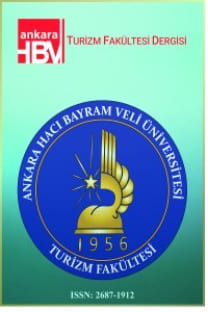Fast Food Hızlı Yemek Pazarında Rekabetçi Stratejilerin Etkinliği: Üniversite Gençliğinin Tercihlerinin Analizi
Fast Food Hızlı yemek pazarında yer alan işletmeler arasında yaşanan yoğun rekabet, bu işletmelerin hayatta kalabilmek için hangi rekabetçi stratejileri uygulamaları gerekir sorusunu akla getirmektedir. Bu sorudan yola çıkılarak, bu çalışmada fast food işletmelerinin uyguladıkları rekabetçi stratejilere değinilmiş ve üniversite öğrencilerinin bu tür işletmeler hakkında düşünce ve tercihlerinin ne olduğunu belirlemek amacıyla bir araştırma yapılmıştır. Yapılan araştırma sonucu analiz edilen veriler doğrultusunda belirli öğrenci grupları arasında fast food türü yiyecek seçiminde ilginç noktalar tespit edilmiştir. Buna göre, kebap ve lahmacunun öğrenciler arasında en fazla tercih edilen fast food türü olduğu, öğrencilerin bu tür yiyecekleri temiz, sağlıklı ve kaliteli buldukları için satın aldıkları görülmüştür. Ayrıca, yapılan araştırma sonucu, fast food türü ürünlerin satın alınması sürecinde dikkate alınan faktörlerin, cinsiyet, eğitim görülen üniversite ve gelir düzeyine göre farklılık gösterdiği de tespit edilmiştir
Anahtar Kelimeler:
Hızlı yemek endüstrisi, rekabet stratejisi
THE INFLUENCE OF THE COMPETITIVE STRATEGIES ON FAST-FOOD SECTOR: THE ANALYSIS OF THE PREFERENCES OF THE UNIVERSITY STUDENTS
The severe competition amongst the companies on the fast-food market reminds us the question which competitive strategies should these firms follow up to be able to survive. By setting out from this question the competitive strategies that these fast-food companies adopted were referred on this study and a research has been carried out to determine the thoughts and preferences of the university students about these sorts of firms. As a result of the analysis of the data obtained at this research some interesting points have been clarified amongst certain students in choosing fastfood type food. Accordingly, it has been determined that kebap and lahmacun are the most preferred fast-food products and they have stated that they bought these as being clean, healthy and having a quality. Besides, the research results have also verified that the factors considered in the buying process of these fast-food products vary in accordance with age, the university attended and income level
Keywords:
Fast-Food industry, competitive strategy,
___
- Burskey, C., TRuesdell, M., Hellow, A., Shepherd, D., “An Analysis of the Fast Food Industry” , 2005.
- Crandall, Richard E. ve Markland, Robert, E., (1996), “Demand Management Today’s Challenge for Service Industries”, Production and Operation Management., 5(2), 106-12.
- Hitt, M. A., Ireland, R.D. Hoskisson, (1999), R.E., Strategic Management, 3.ed., South Western
- Howard, Theresa., (1994), “A Double Drive Throughs Tuning Engines: Big 3 Shift Gears to Stay on Course”, Nation’s Restaurant News. 28 (15), pp. 1-4.
- Lan, Li ve Khan, Mahmood A., (1995), “Hong Kong’s Fast Food Industry: An Overview”, Cornell Hotel and Restaurant Administration Quarterly. 36(3), 34-42.
- Porter, Michael, E., (2000), Rekabet Stratejisi, Sektör ve Rakip Analizi Teknikleri, Çeviri: Gülen Ulubilgen, Sistem Yayıncılık., İstanbul.
- Rumore, Nancy, Zhu, Zhiwei, Taner John, Scheuermann Larry, (1999), “Effectiveness of Competitive Strategies in Fast Food Markets: An Analysis of Costomers’ Preferences, Journal of Restaurant and Foodservice Marketing, Vol.3 (3/4), 39-47.
- Ülgen, Hayri, Mirze, Kadri, S., (2004), İşletmelerde Stratejik Yönetim, Literatür Yayıncılık, Dağıtım, Pazarlama, San. ve Tic., Ltd., İstanbul.
- Standard Directory of Advertisers. National Register Publishing. N.Y.: 2001.
- www.Issihk.com: 2005.
- www.triconglobal.com/news/101601_pop.htm
- Yamane, Toro, (2001), Temel Örnekleme Yöntemleri, Çevirenler: Alptekin Esin, Celal Aydın, M. Akif Bakır, esen Gürbüzsel, Literatür Yayıncılık, Dağıtım, Pazarlama, San. ve Tic., Ltd., İstanbul
- ISSN: 2687-1912
- Yayın Aralığı: Yılda 2 Sayı
- Başlangıç: 1998
- Yayıncı: Ankara Hacı Bayram Veli Üniversitesi
Sayıdaki Diğer Makaleler
Katılmalı Yönetim Üzerine Otel İşletmelerinde Bir Araştırma
Ahmet TAYFUN, Handan Aslan KÖSEM
Melih TOPALOĞLU, İbrahim AYDIN
Kastamonu'ya Gelen Yerli Turist Profilini Belirlemeye Yönelik Bir Uygulama
İhracat Performansının Belirleyicisi Olarak İşletme Yöneticilerinin İhracata Yaklaşımı
